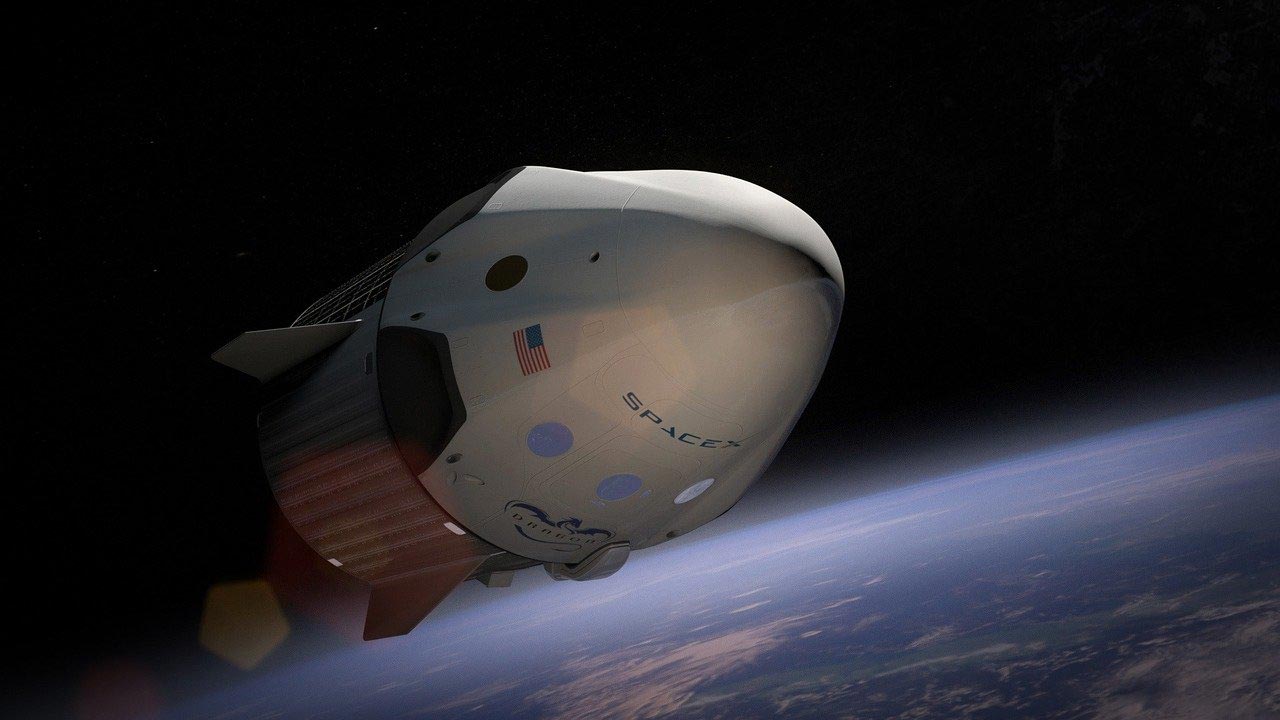
Compressed Gases Used in Aerospace Launches & Space Travel
The Use of Compressed Gases in Rocket Launches and Space Travel
Air Source Industries is your trusted medical and industrial compressed gas provider. Recently, people around the world witnessed the successful launch of the SpaceX Falcon 9 rocket from Florida. We wanted to share how compressed gases are a vital component of space travel and the aerospace industry.
Compressed Gas in the Space Program
To propel a rocket and its payload out of our atmosphere takes about 37 million horsepower of thrust. This incredible controlled explosion is achieved by burning gases which are both light and extremely flammable.
Liquid hydrogen and liquid oxygen are the signature fuels of the American space program.
Because liquid oxygen and liquid hydrogen are both cryogenic—gases that can be liquefied only at extremely low temperatures—they pose enormous technical challenges. Liquid hydrogen must be stored at minus 423°F and handled with extreme care. To keep it from evaporating or boiling off, rockets fueled with liquid hydrogen must be carefully insulated from all sources of heat, such as rocket engine exhaust and air friction during flight through the atmosphere. Once the vehicle reaches space, it must be protected from the radiant heat of the Sun. When liquid hydrogen absorbs heat, it expands rapidly; thus, venting is necessary to prevent the tank from exploding.
When liquid hydrogen and the liquid oxygen are combined and combusted, the temperature in the main combustion chamber is 6,000 degrees Fahrenheit.
Taming liquid hydrogen is one of the significant technical achievements of twentieth century American rocketry.
Space X’s Falcon 9
The Falcon 9 is a partially reusable two-stage-to-orbit medium-lift launch vehicle designed and manufactured by SpaceX. It is powered by Merlin engines, also developed by SpaceX, burning cryogenic liquid oxygen and rocket-grade kerosene as propellants.
The Falcon 9’s Merlin engines have gone through multiple upgrades to produce more thrust, and SpaceX stretched the length of the rocket’s kerosene and liquid oxygen propellant tanks to gain performance.
When those upgrades proved not enough, SpaceX began loading liquid propellants into the Falcon 9 that are chilled closer to their freezing temperature. The change, known as propellant densification, allowed engineers to cram more propellants into the Falcon 9 to further improve its lift capacity.
Recent Advancements in Propellant Densification
Next-generation launch vehicles demand several technological improvements to achieve lower cost and more reliable access to space. One technology area whose performance
gains may far exceed others is densified propellants. The ideal rocket engine propellant is characterized by high specific impulse, high density, and low vapor pressure.
A propellant combination of liquid hydrogen and liquid oxygen (LH2/LOX) is one of the highest performance propellants, but LH2 stored at standard conditions has a relatively low density
and high vapor pressure.
Propellant densification can significantly improve this propellant’s properties relative to vehicle design and engine performance. Vehicle performance calculations based on an average of existing launch vehicles indicate that densified propellants may allow an increase in payload mass of up to five percent.
Gases for Once We Get into Space
Just where does the International Space Station (ISS) get its oxygen from?
Bottles of compressed gas would be a solution but the bottles have thick metal walls and are very heavy. As well bottles of highly pressurized gas are a potential safety hazard and not something you would really want on your space station.
So, they make their own oxygen through a process called electrolysis. Water is a molecule that is made up of two hydrogen atoms and one oxygen atom (H2O). Passing an electric current between two electrodes and through water will cause it to decompose into hydrogen gas and oxygen gas.
Electrolysis is therefore used because it is obviously much safer to transport non-pressurized, non-flammable water to the ISS than many bottles of heavy compressed gas.
The ISS uses at least two systems for making oxygen by electrolysis. The US-supplied and imaginatively named Oxygen Generator System (OGS) and the Russian made Elektron system.
These systems either use water that was delivered straight to the ISS or it collects the water after the astronauts have consumed it and excreted it (i.e. urine collection as well as the humid air that the astronauts breathe out).
Of course, hydrogen gas is produced by the system and it is potentially flammable and under the right conditions it is also explosive. So, this gas is vented out into space where it dissipates and becomes harmless.
Although you can never avoid the cost of the weight of the oxygen, with electrolysis you can at least avoid the cost of transporting all those heavy compressed gas bottles up into low Earth orbit.
Pressurized Tanks
Pressurized tanks are still used but in a limited manner. The OGS and Elektron systems produce only oxygen and a pure oxygen atmosphere is incredibly dangerous so this oxygen must be balanced out with nitrogen.
When the supply ships arrive at the ISS they pump compressed gases into the pressurized tanks at the airlock nodes. This system then monitors and mixes nitrogen into the ISS atmosphere at the right concentrations to keep the astronauts safe.
Conclusion
For industrial and medical businesses on earth, Air Source Industries has your compressed gas needs covered in the greater Los Angeles area.
The sooner you reach out, the sooner we can help! For price quotes, simply click “Get a Quote” or talk to our gas experts today at (562) 426-4017.
Sources:
https://en.wikipedia.org/wiki/Falcon_9
https://www.spacex.com/vehicles/falcon-9/
https://www.nasa.gov/sites/default/files/113069main_shuttle_trivia.pdf
https://ntrs.nasa.gov/archive/nasa/casi.ntrs.nasa.gov/20050180834.pdf
https://steemit.com/steemstem/@procrastilearner/how-does-the-international-space-station-gets-its-oxygen

